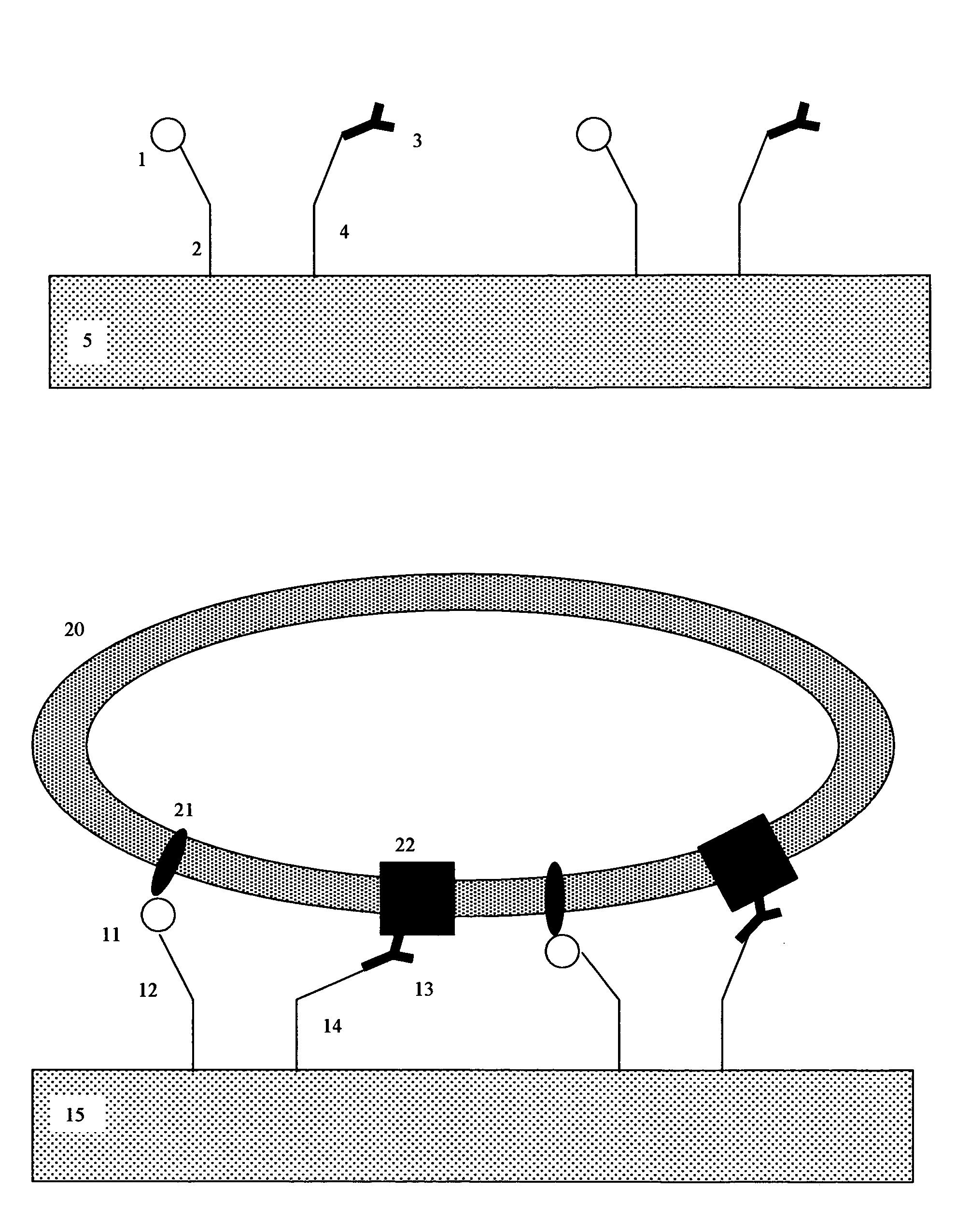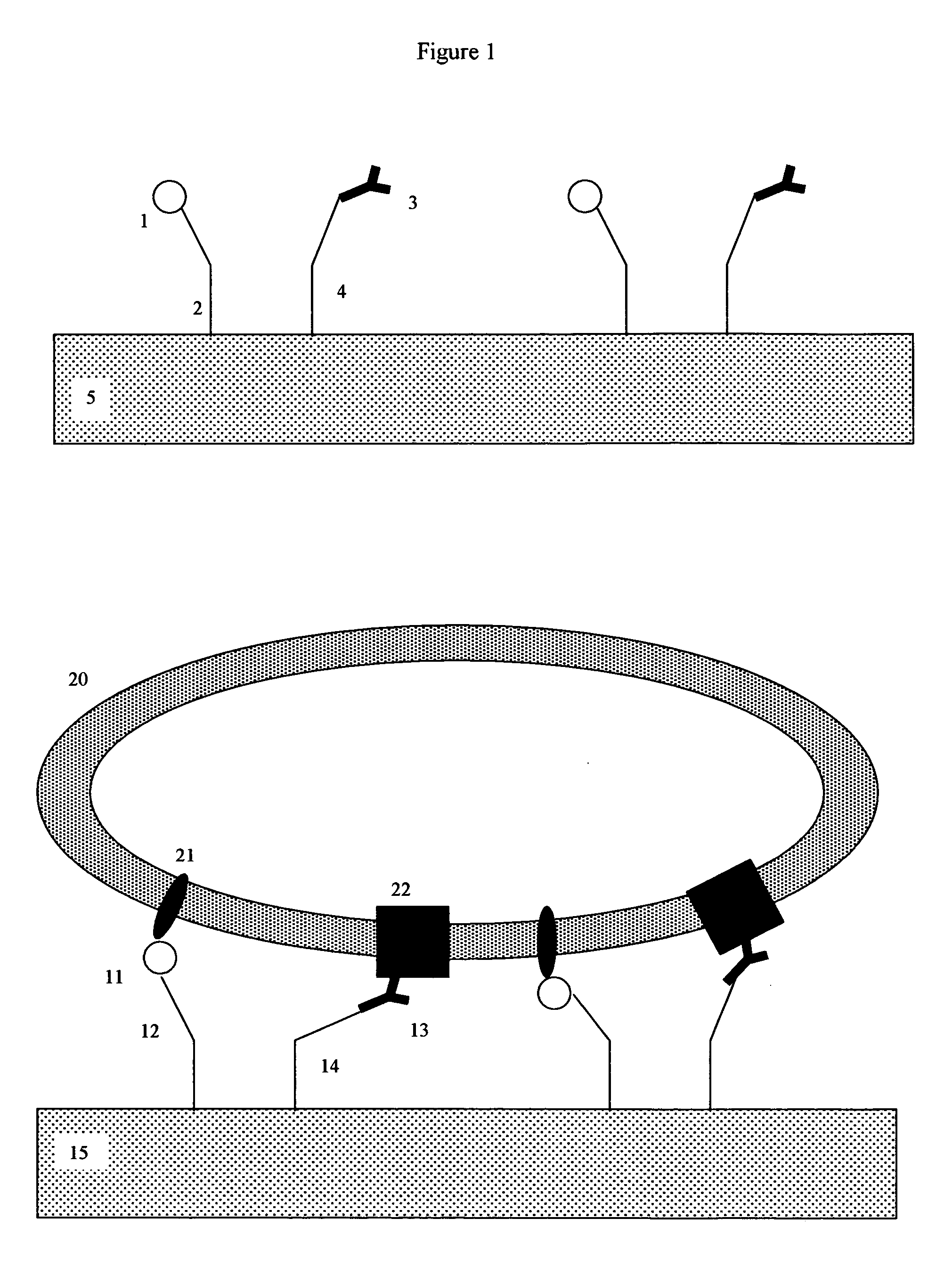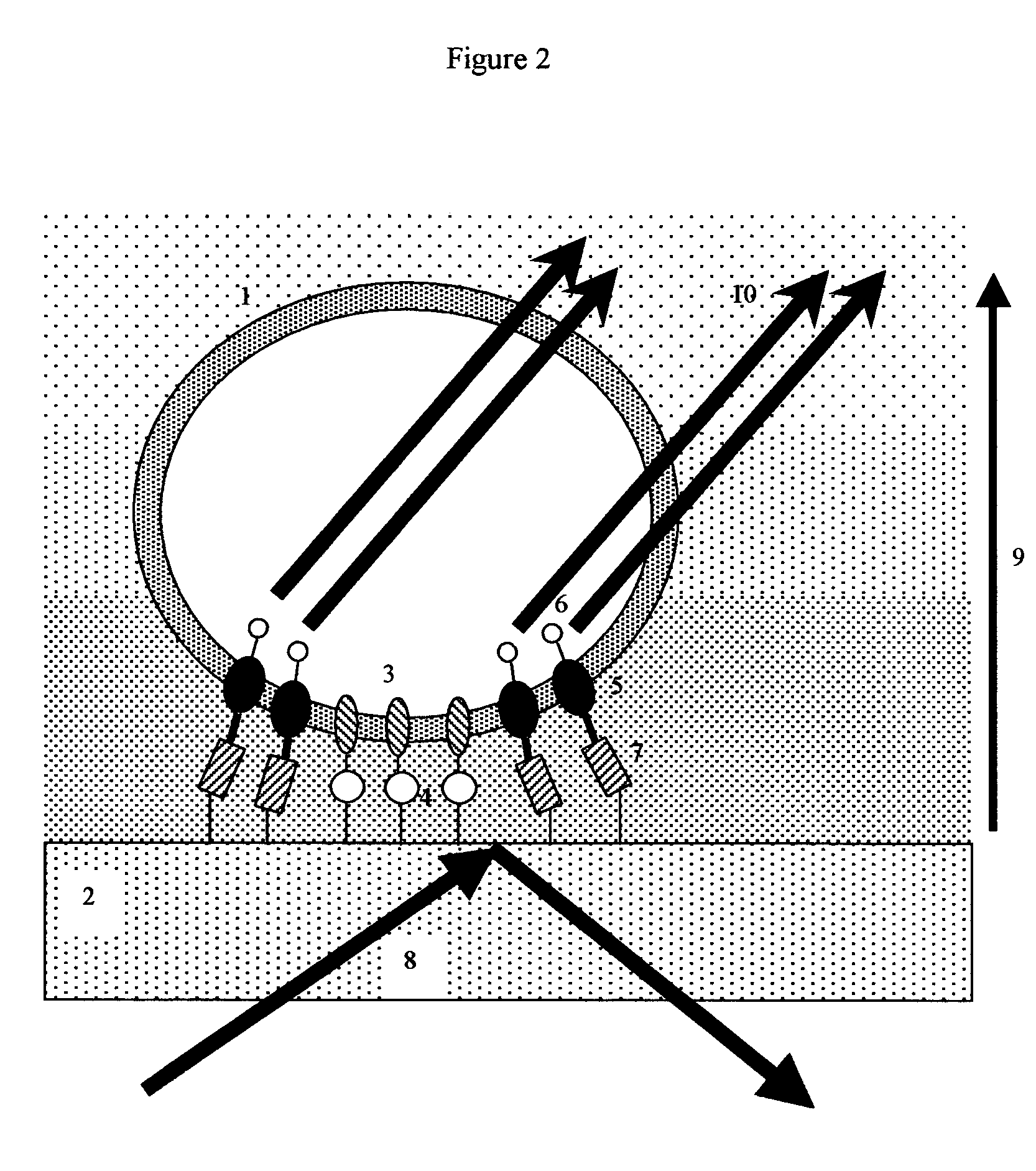Membrane receptor reagent and assay
- Summary
- Abstract
- Description
- Claims
- Application Information
AI Technical Summary
Benefits of technology
Problems solved by technology
Method used
Image
Examples
example 1
Evanescent Wave Calculations
[0109]Upon hitting a boundary between two media with different indexes of refraction, there is a critical angle in which light waves can either pass from the first media to the second media, or bounce back into the first media. At angles where light bounces back, part of the wave energy passes into the second media for a very short distance. This is called the evanescent wave. Evanescent wave techniques are commonly used in microscopy to help visualize regions where cultured cell membranes adhere to transparent supports.
[0110]In the common situation where light is passing from a glass or transparent support into an aqueous media, evanescent waves typically penetrate several hundred nanometers into the aqueous media. The wave decays in intensity at a rate of
Intensity=Ioe(−z / d)
Where Io is the illumination intensity at the support surface, z is the distance in nanometers above the support surface, and d is a constant (approximately 277 nanometers). (For thes...
example 2
[0118]As previously discussed, one of the most important signal enhancing techniques is signal normalization, using concurrent normal fluorescence (epifluorescent) illumination to provide a second reference, signal. Here the microarray spots are sequentially visualized by both evanescent illumination and epifluorescence illumination, and the evanescent signal is normalized by the epifluorescent signal. Since the epifluorescent signal is relatively unaffected by the position of the membrane proteins on the liposome, epifluorescence normalization corrects for many variables, including liposome spot density, labeling efficiency, and GPCR receptor concentration.
[0119]As an example of the issues that are involved in signal processing, consider the following model:
[0120]Any given microarray spot will have a variable number of liposomes “x”, and a background signal “b”, where b may be due to contaminating lysed lyposomes, autofluorescence, or other impurities in the reagen...
example 3
Studies with Model GPCR Target Membrane Receptors
[0135]Not all GPCR receptors bind drug ligands. Some, such as bacteriorhodopsin, act as sensors. Bacteriorhodopsin is a 7-transmembrane protein with well-understood properties. It is available in low cost and large quantities from a variety of commercial sources. It is easy to work with, and is often used for exploratory biophysical research. Here, methods to construct prototype membrane sensors using liposomes with fluorescent bacteriorhodopsin are described.
Preparation of Large Liposomes Containing Fluorescent Bacteriorhodopsin:
[0136]Bacteriorhodopsin from commercial sources can be labeled with the Alexa Fluor 488 fluorophore (a high efficiency fluorescent moiety), and incorporated into giant (5 micron) phospholipid vesicles (liposomes) following the methods of Kahya et. al (Kahya N, Pecheur E, de Boeij, W, Wiersma D, Hoekstra D, “Reconstitution of Membrane Proteins into Giant Unilamellar Vesicles via Peptide-Induced Fusion”, Biophy...
PUM
 Login to View More
Login to View More Abstract
Description
Claims
Application Information
 Login to View More
Login to View More - R&D
- Intellectual Property
- Life Sciences
- Materials
- Tech Scout
- Unparalleled Data Quality
- Higher Quality Content
- 60% Fewer Hallucinations
Browse by: Latest US Patents, China's latest patents, Technical Efficacy Thesaurus, Application Domain, Technology Topic, Popular Technical Reports.
© 2025 PatSnap. All rights reserved.Legal|Privacy policy|Modern Slavery Act Transparency Statement|Sitemap|About US| Contact US: help@patsnap.com



